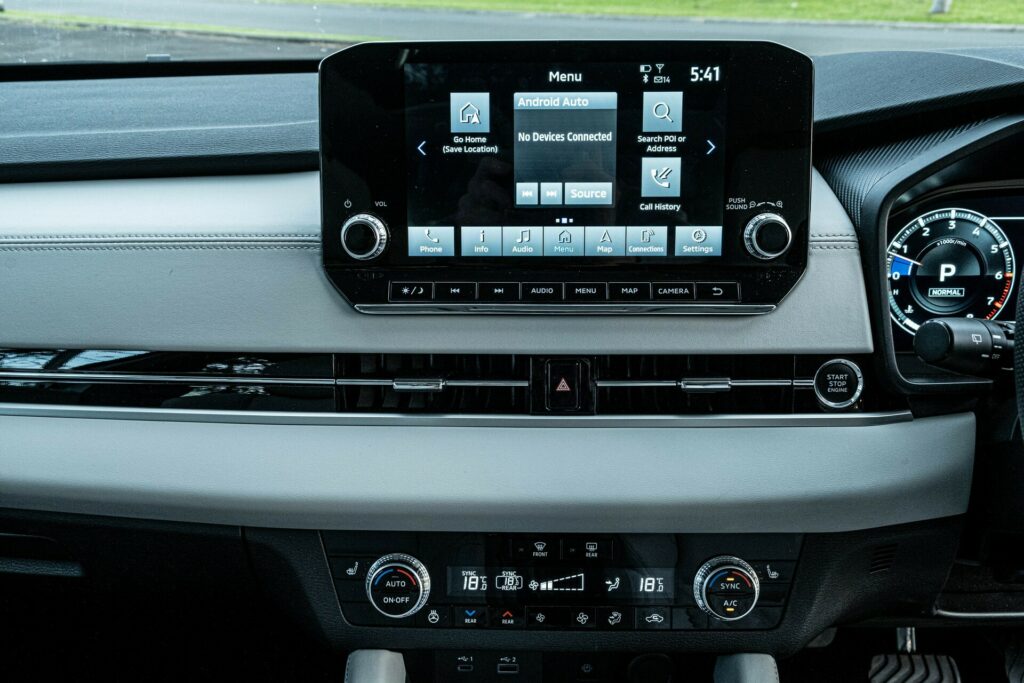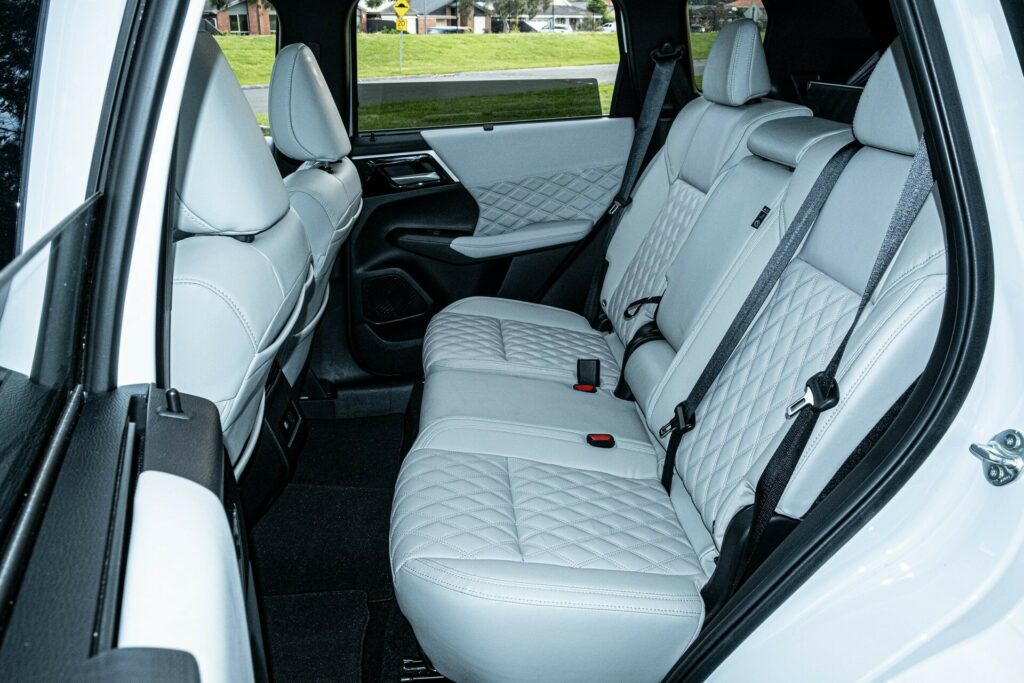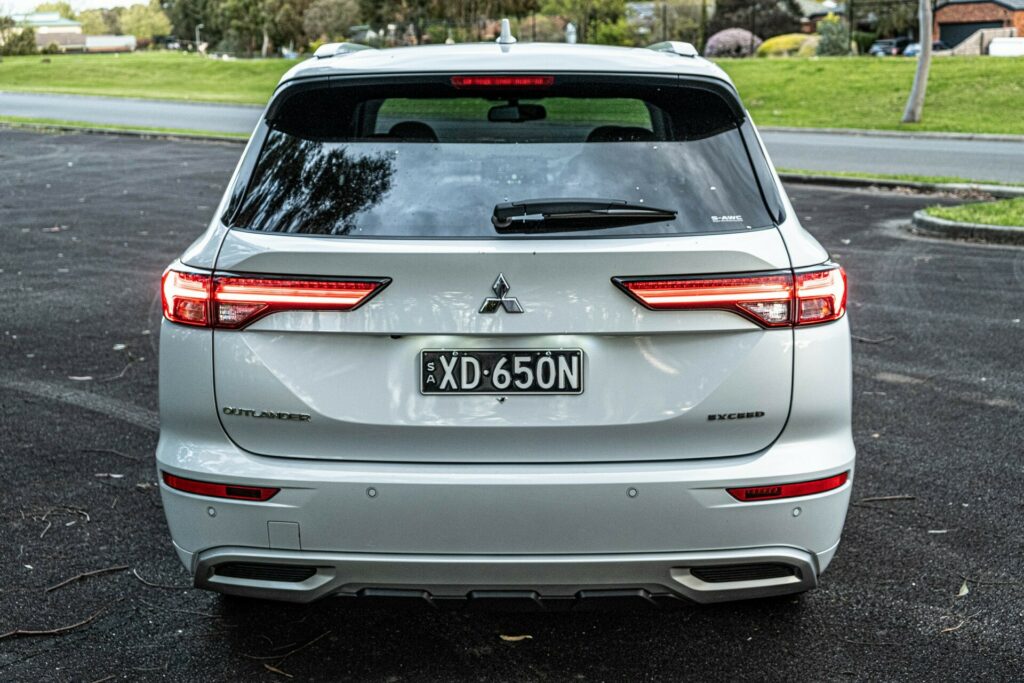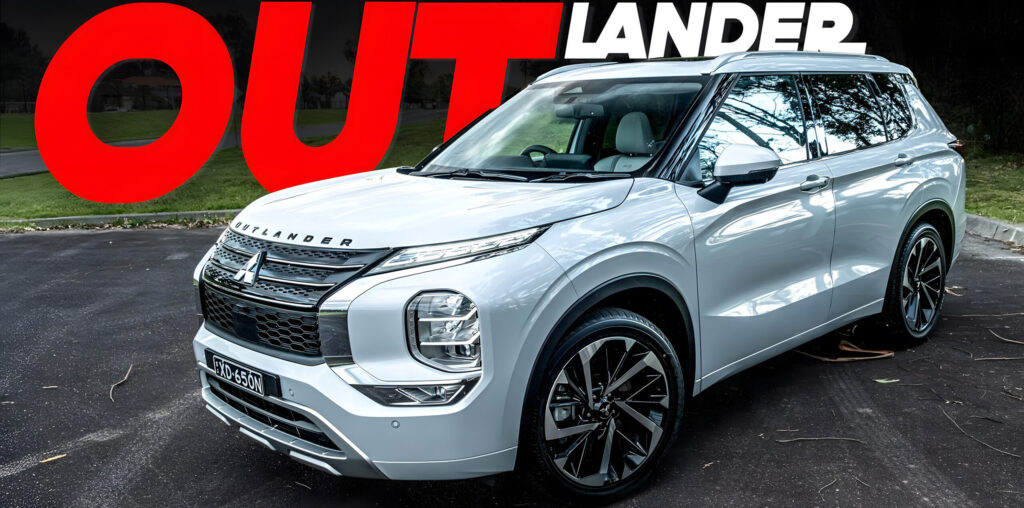PROS ›› Distinctive looks, spacious front and second rows, generous equipment, 10-year extended warranty CONS ›› Firm ride, unrefined and just adequate engine, small infotainment screen with outdated software, cramped third-row seats
For much of the past decade, Mitsubishi has had one of the most outdated and uninspiring line-ups of vehicles of any legacy automaker. While other manufacturers were pushing the envelope, Mitsubishi was content to let its designs and technologies stagnate. However, in recent years, the brand has started to get its act together, most notably with the launch of the fourth-generation Outlander and, more recently, the sixth-generation Triton.
In Australia, the latest Outlander has proven to be a massive success for the brand, consistently appearing among the country’s top five best-selling new cars every month. But is the fanfare really deserved? To answer that question, I spent a few days living with one to see if it lives up to the hype.
Quick facts
Photo Credits: Brad Anderson/Carscoops
The Outlander shares its CMF-CD platform with the Nissan X-Trail/Rogue, a vehicle we’ve driven on a handful of occasions and been very impressed by. Down Under, prices start at AU$41,930 (~$27,300) for an entry-level two-wheel drive Outlander ES and top out at AU$79,630 (~$51,800) for the Outlander Plug-In Hybrid EV GSR. All up, there are 14 different trim levels/powertrain configurations for shoppers to choose between. We tested the AWD Exceed, which sits towards the top of the AWD range, starting at $AU57,420 (~$37,400) and coming standard with seven seats.
There’s no mistaking the Outlander for any other vehicle on the road. In a world where so many SUVs look similar to each other, Mitsubishi has to be applauded for doing something different with the car’s design. I’ve always found it a bit too much, particularly from the front, but sales figures prove the automaker’s designers were on to something when sketching it up.
A nice Mitsubishi interior, who would have thought?
Mitsubishi has also done a fine job with the Outlander’s interior, which I was quite surprised by. Just like the current-gen X-Trail/Rogue, the cabin of the Outlander is far improved from its predecessor. It’s not perfect, but it absolutely feels fitting of the price point, particularly in Exceed specification.
Photo Credits: Brad Anderson/Carscoops
First, the bad. The infotainment screen is below par. It’s a small 8-inch unit that’s the same basic one that was used in the updated X-Trail/Rogue when it launched. However, whereas Nissan quickly ditched that screen in favor of a far-superior 12.3-inch display, Mitsubishi has stuck with the smaller unit across the entire range. Fortunately, the new 2025 model, due to arrive in Australia soon, receives the Nissan’s new display.
Like other Mitsubishi products, the software used is very outdated, not only compared to its Nissan sibling, but also to other SUVs in the segment. The graphics are boring, the resolution is poor, it’s slow to respond, and it has few interesting features. Fortunately, it does have wireless Apple CarPlay, although Android Auto remains a wired affair.

The 12.3-inch digital instrument cluster is better. It’s clearer than the infotainment screen and offers a respectable amount of customization. A head-up display comes standard across many Outlander variants and is a welcome addition.
Read: Mitsubishi Teases Two New Renault-Based SUVs, Will Launch In Europe In 2025
Beyond the dodgy central screen, there’s plenty to like about the Mitsubishi’s cabin. First and foremost, it feels extremely spacious, more so than the X-Trail/Nissan. Our test vehicle came standard with a huge panoramic sunroof and was bathed in quilted white leather across the seats and door panels. Some of the plastic buttons on the steering wheel feel a little cheap, but other important controls, like those for the HVAC, the shifter, and the driving mode selector, are nicer.
Other nice touches include a 10-speaker Bose premium sound system, tri-zone climate control, rear sunshades, a heated steering wheel, and memory seats.

Space in the second more is more than ample. There’s plenty of legroom and headroom, plus the relatively small transmission hump means it is possible to squeeze three adults in. The third row is much tighter and best suited to small children only. Cargo capacity is good, with 478 liters (16.8 cubic-feet) of space with the third-row folded away and 1,461 liters (51.6 cubic-feet) with the second row also folded flat.
Adequate but unrefined powertrain and a firm ride
The go-to powertrain option for the Outlander is the plug-in hybrid. It uses a 2.4-liter naturally-aspirated four-cylinder working alongside two electric motors – one at the front axle and one at the rear. The Outlander we tested had the entry-level non-hybrid 2.5-liter, which isn’t quite as compelling.
This engine is good for 181 hp (135 kW) at 6,000 rpm and 244 Nm (180 lb-ft) of torque at 3,600 rpm and is coupled to a continuously variable transmission. It’s the same engine as found in the Nissan and yet, it feels slightly less refined in the Mitsubishi. It sounds strained when you get on it and is a little louder than we’d like. For everyday driving, it’s adequate and offers just about enough grunt for a seven-seat SUV of this size. The CVT also does a solid job of transmitting power to the ground, even though it is a little uninspiring.
Photo Credits: Brad Anderson/Carscoops
I was particularly fond of the light steering of the Outlander, as it makes it easy to navigate through tight city streets. Feedback is somewhat lacking, particularly when cornering in a more spirited manner, but this is par for the course of many modern SUVs.
The ride quality, on the other hand, is not so nice. While the Nissan rides well, the Outlander feels noticeably firmer. This can be partly explained by the fact the Exceed we tested had the larger 20-inch wheels. It’s not a harsh ride by any means. However, it could grow tiresome for second and third-row passengers, and means the Mitsubishi doesn’t feel as premium as some of its rivals.
Driving modes and fuel economy
A slew of different driving modes are offered. For road use, the SUV performs best in either the Eco or Normal modes, where Mitsubishi says it’ll use 8.1 l/100 km (29 US mpg). Our average was closer to 8.5 l/100 (27.6 US mpg), which is solid, albeit far from remarkable. Mud, Snow, Gravel, and Tarmac modes are also offered, tweaking various parameters, including the all-wheel drive system to best suit different conditions.

All 2024 Outlander models are sold with Mitsubishi’s MiTEC suite of safety and driver assistance features, although only the PHEV Exceed, Exceed Tourer, and GSR are sold with Lane Keep Assist. Among the key features standard across the range include rear cross-traffic alert, rear automatic emergency braking, lane departure warning, forward collision mitigation, blind spot warning, adaptive cruise control, and traffic sign recognition.
Standout warranty
One of the key selling points of the Outlander in Australia is the warranty. As standard, it’s sold with a five-year, 100,000 km (62,000-mile) warranty. However, if customers opt for a 10-year capped price servicing plan and get their vehicle serviced annually at a Mitsubishi dealership, the warranty is extended to 10 years and 200,000 km (124,000 miles). The only other brand that offers a 10-year warranty locally is MG.
Verdict
After spending a week with the 2024 Mitsubishi Outlander Exceed, I can see why so many people are buying them. The interior is well-equipped, spacious, and genuinely suitable for families, with ample room for everyone. The driving experience, while not particularly exciting, is more than adequate for most situations. However, I still prefer its platform sibling from Nissan, the X-Trail (sold as the Rogue in North America) for its slightly nicer cabin, more refined ride and better overall performance.

